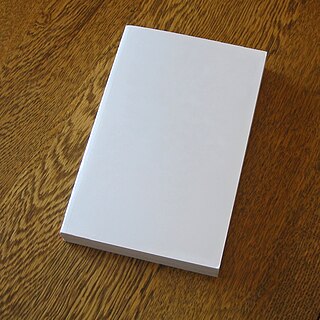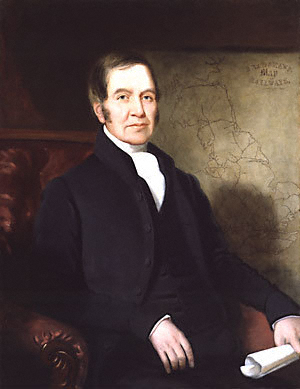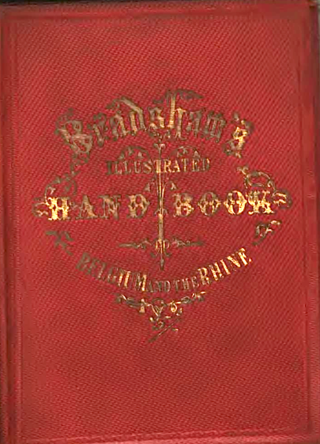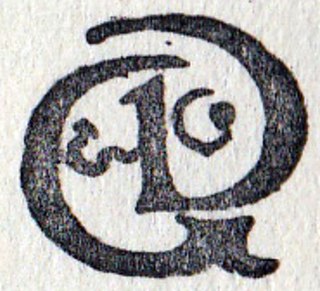Related Research Articles

A paperback book is one with a thick paper or paperboard cover, and often held together with glue rather than stitches or staples. In contrast, hardcover (hardback) books are bound with cardboard covered with cloth, leather, paper, or plastic.

Routledge is a British multinational publisher. It was founded in 1836 by George Routledge, and specialises in providing academic books, journals and online resources in the fields of the humanities, behavioural science, education, law, and social science. The company publishes approximately 1,800 journals and 5,000 new books each year and their backlist encompasses over 70,000 titles. Routledge is claimed to be the largest global academic publisher within humanities and social sciences.

Paul Anthony Elliott Bew, Baron Bew, is a British historian from Ireland and a life peer. He has worked at Queen's University Belfast since 1979, and is currently Professor of Irish Politics, a position he has held since 1991.

George Bradshaw was an English cartographer, printer and publisher. He developed Bradshaw's Guide, a widely sold series of combined railway guides and timetables.

Daniel Gerard Morrison is a former Provisional Irish Republican Army (IRA) member, Irish author and activist who played a crucial role in public events during the Troubles in Northern Ireland. An Irish republican, Morrison is also a former Sinn Féin publicity director and editor of Republican News and An Phoblacht. He is the secretary of the Bobby Sands Trust and current chairman of Féile an Phobail, the largest community arts festival in Ireland.

George Routledge was a British book publisher and the founder of the publishing house Routledge.
The three-volume novel was a standard form of publishing for British fiction during the nineteenth century. It was a significant stage in the development of the modern novel as a form of popular literature in Western culture.

Little, Brown and Company is an American publishing company founded in 1837 by Charles Coffin Little and James Brown in Boston. For close to two centuries it has published fiction and nonfiction by American authors. Early lists featured Emily Dickinson's poetry and Bartlett's Familiar Quotations. Since 2006 Little, Brown and Company is a division of the Hachette Book Group.
Michael Sadleir, born Michael Thomas Harvey Sadler, was a British publisher, novelist, book collector, and bibliographer.
Events from the year 1847 in Ireland.

A yellow-back or yellowback is a cheap novel which was published in Britain in the second half of the 19th century. They were occasionally called "mustard-plaster" novels.
William Pickering was an English publisher and bookseller, notable for various innovations in publishing. He is sometimes credited with introducing edition binding in cloth to British publishing.
Ronald Brunlees McKerrow, FBA was one of the leading bibliographers and Shakespeare scholars of the 20th century.

Richard Bentley was a 19th-century English publisher born into a publishing family. He started a firm with his brother in 1819. Ten years later, he went into partnership with the publisher Henry Colburn. Although the business was often successful, publishing the famous "Standard Novels" series, they ended their partnership in acrimony three years later. Bentley continued alone profitably in the 1830s and early 1840s, establishing the well-known periodical Bentley's Miscellany. However, the periodical went into decline after its editor, Charles Dickens, left. Bentley's business started to falter after 1843 and he sold many of his copyrights. Only 15 years later did it begin to recover.

John Marshall (1756–1824) was a London publisher who specialized in children's literature, chapbooks, educational games and teaching schemes. He called himself the "Children's Printer" and children his "young friends". He was pre-eminent in England as a children's book publisher from about 1780 to 1800. After 1795, he became the publisher of Hannah More's Cheap Repository Tracts, but a dispute with her led to him issuing a similar series of his own. About 1800 Marshall began publishing a series of miniature libraries, games and picture books for children. After his death in July 1824, his business was continued either by his widow or his unmarried daughter, both of whom were named Eleanor.

Bradshaw's was a series of railway timetables and travel guide books published by W.J. Adams and later Henry Blacklock, both of London. They are named after founder George Bradshaw, who produced his first timetable in October 1839. Although Bradshaw died in 1853, the range of titles bearing his name continued to expand for the remainder of the 19th and early part of the 20th century, covering at various times Continental Europe, India, Australia and New Zealand, as well as parts of the Middle-East. They survived until May 1961, when the final monthly edition of the British guide was produced. The British and Continental guides were referred to extensively by presenter Michael Portillo in his multiple television series.
Anthony McIntyre is a former Provisional Irish Republican Army volunteer, writer and historian. He was imprisoned for murder for 18 years in Long Kesh, spending four of those years on the no-wash protest. After his release from prison in 1992 he completed a PhD in political science at Queen's University Belfast and left the Republican Movement in 1998 to work as a journalist and researcher. A collection of his journalism was published as a book in 2008, Good Friday: The Death of Irish Republicanism.
Frederick Joseph Harvey Darton was an author, publisher, and historian of children's literature. He was best known for his pioneering works in The Story of English Children's Books in England: Five Centuries of Social Life (1932). The Children's Books History Society presented an award in his honour.
Simpkin & Marshall was a British bookseller, book wholesaler and book publisher. The firm was founded in 1819 and traded until the 1940s. For many decades the firm was Britain's largest book wholesaler and a respected family-owned company, but it was acquired by the media proprietor Robert Maxwell and went bankrupt in 1954, an event which, according to Lionel Leventhal, "sounded a warning to the book trade about Captain Robert Maxwell's way of doing business".

Wells Gardner, Darton and Company was a British publishing company based in London. The company was founded by William Wells Gardner (1821–1880) in 1859 to produce mainly ecclesiastical texts; it later brought on as a partner Joseph William Darton (1844–1916), and branched out into magazines and children's literature.
References
- 1 2 Details for: SIMMS & MCINTYRE, British Book Trade Index, Bodleian Libraries, bbti.bodleian.ox.ac.uk. Retrieved 18 April 2021.
- 1 2 Simms & McIntyre (Biographical details), British Museum, britishmuseum.org. Retrieved 18 April 2021.
- 1 2 J. R. R. Adams, The Printed Word and the Common Man: Popular Culture in Ulster 1700-1900 , Belfast: Institute for Irish Studies, 1987, p. 155 and p. 162. Retrieved 18 April 2021.
- 1 2 3 4 5 J. R. R. Adams, "Simms and M'Intyre", British Literary Publishing Houses, 1820-1880, Detroit: Gale Research, 1991 (Dictionary of Literary Biography. vol. 106), pp. 275-276.
- 1 2 3 Pike, Richard, ed. (1888). Railway Adventures and Anecdotes (Third ed.). Hamilton, Adams, and Co. pp. 130–131.
- 1 2 The Parlour Library. British Library, bl.uk. Retrieved 18 April 2021.
- 1 2 Parlour Library (Simms & McIntyre) - Book Series List, publishinghistory.com. Retrieved 1 January 2021.
- ↑ Publisher's advertisement in The Dublin University Magazine, February 1847, as quoted by: Michael Sadleir, XIX Fiction: A Bibliographical Record based on his own Collection, Vol. II, p. 150.
- ↑ "Books just published", The Publishers' Circular, Volume 1, 1839, p. 5. Retrieved 18 April 2021.
- ↑ Stephen Colclough, "From the Nineteenth Century to the Modern Age", in: Zachery Lesser, ed., The Book in Britain: A Historical Introduction, Wiley Blackwell, 2019, p. 282.
- ↑ D. McKitterick, "Changes in the look of the book", in: D. McKitterick, ed., The Cambridge History of the Book in Britain, Vol. 6: 1830-1914, Cambridge University Press: 2009
- ↑ Aspects of the Victorian book: Yellowbacks, British Library, bl.uk. Retrieved 18 April 2021.